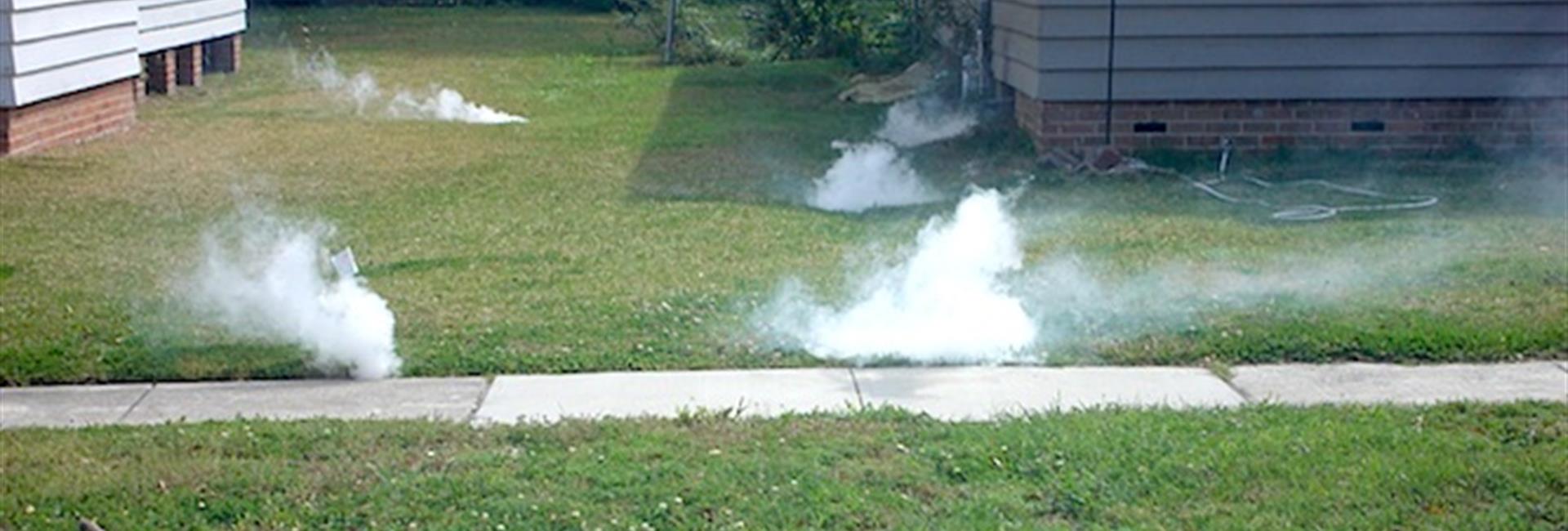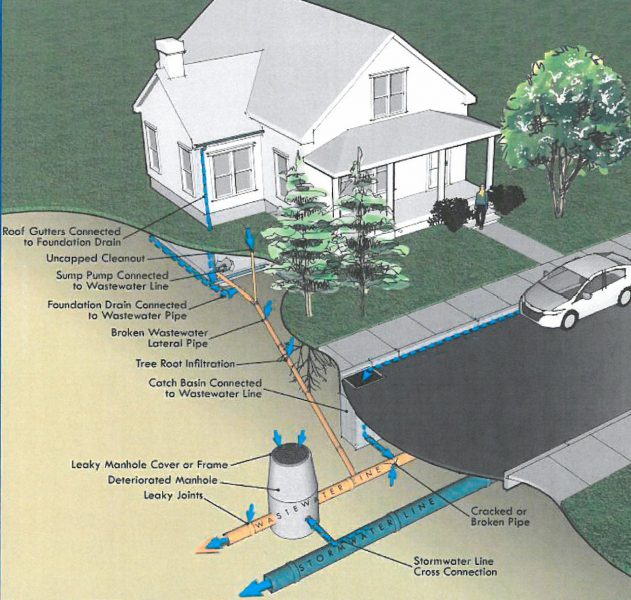
Sanitary Sewer Smoke Testing
In the coming weeks, the Public Works crew will be conducting smoke tests on sections of our sewer system. These tests help the City identify how and where water (and other material) enters and leaves our sewer system, allowing us to locate defective connections and spots in need of repairs.
During smoke testing, field crews blow air and smoke into the sewer system from the street and then monitor where it comes out. The smoke under pressure will fill the main line as well as any connections and then follow the path of any leak to the ground surface, quickly revealing the source of the problem.

For instance, if smoke permeates up through a yard, it indicates breaks in the sewer line. The smoke is gently pushed to overcome atmospheric pressure and should escape from building roof vents.
The smoke itself is actually not smoke, but a non-toxic, non-staining odorless vapor.
Smoke testing is a harmless, cost-effective way to identify areas of our sewer system that need improvement.
Below are some common questions and answers about this testing, if you have any further questions, please call the Public Works Department at (360) 384-4006.
